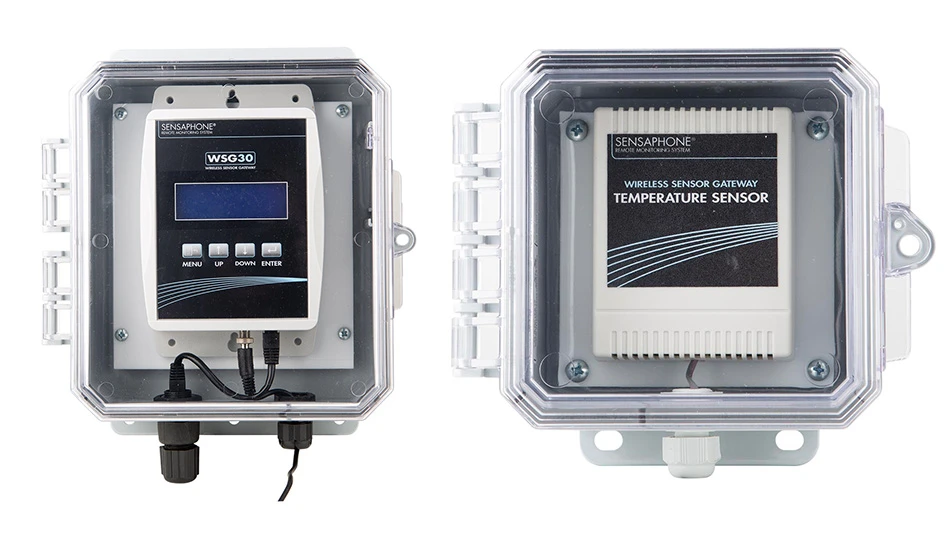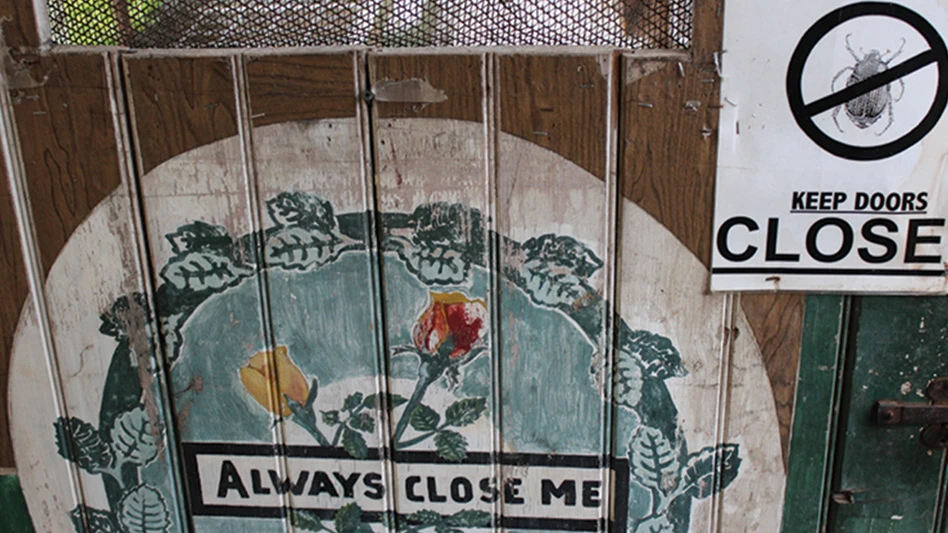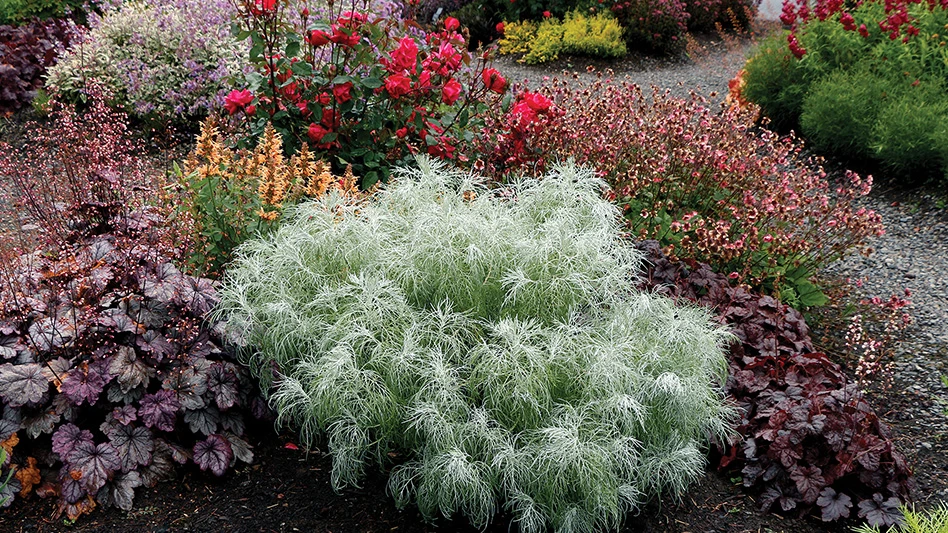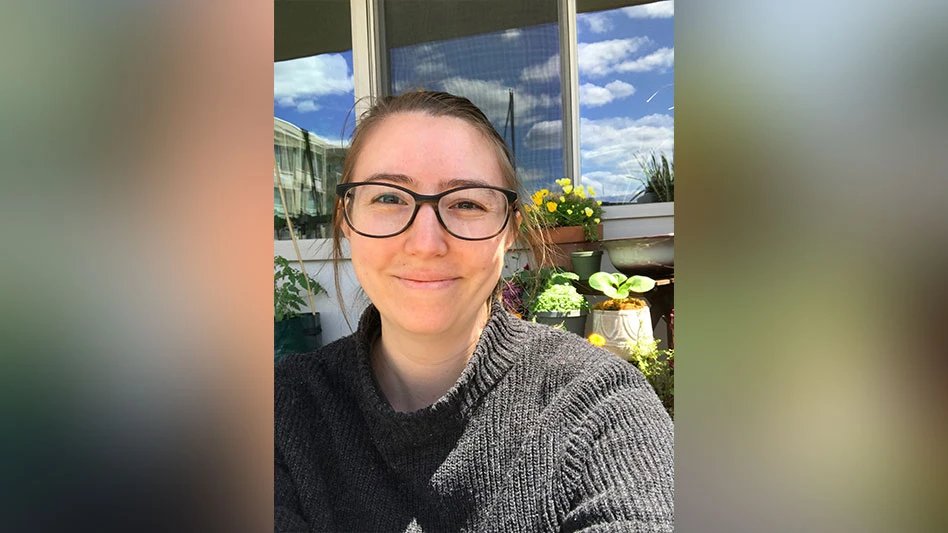For most growers, energy expenditures are the second largest greenhouse operational expense after labor. Growers should make an energy savings investment calculation for each greenhouse compartment. By doing so, growers can identify the priority for investment. An investment should be made if the return on investment in a compartment is quicker than other investments competing for the same capital. In general, the most energy intensive compartments, such as a propagation area that is being used during several cold months, will be the place to start.
Energy efficient coverings
Twin wall, rigid plastic glazing materials (acrylic and polycarbonate) and air inflated, double layer polyethylene film are more energy efficient than single-layer glazings (glass or corrugated plastics). Even with the more efficient glazing materials, it is still economical to use curtains for energy savings.
Adding a second layer of polyethylene film to a first layer of infrared film reduces the envelope heat loss rate by 35-40 percent. Installing a typical 50 percent shade screen can reduce the heat loss rate of polyethylene film by an additional 50 percent. For each additional film layer installed, the savings is fractionally similar regardless of the glazing system, but the amount of savings diminishes as the covering efficiency increases. It is necessary to make a calculation specific to your greenhouse situation, which considers location, greenhouse size and shape, glazing material, crop heating set point temperatures, heating system efficiency and fuel price.
Calculating energy savings
It is useful to make heating calculations and savings estimates that can be achieved with energy efficiency technologies, such as curtains. USDA has produced a free software program called Virtual Grower (www.ars.usda.gov/Research/docs.htm?docid=11449) that is a user-friendly decision-making tool.
Table 1 was prepared using the Virtual Grower software to calculate the heating demand dictated by crop, location and heat loss rates of various glazing and curtain combinations. The calculations are for the same, virtual greenhouse typical of year-round production. The table indicates the investments for single-layer glazed houses are similar and very attractive. The investment for a double-poly covered house is also attractive, although the payback for the investment will take an extra year of use.

The right screen material
There are four general reasons to install a screen/curtain: Save energy; provide shade or reduce the solar radiation and heat stress on the plants; prevent light from entering the greenhouse, called black out or short day creation; and sometimes a screen/curtain is needed to prevent light pollution.
All of these curtain uses save a significant amount of heat energy except for the curtain that is used for shading. Shade curtains can save energy by reducing the amount of electricity needed to run exhaust fans and other cooling equipment. The shade cloth is most commonly an open weave construction that, by design, allows air to pass through.
There are screen materials that provide both energy savings and shading at the same time. Black out and light pollution curtains, while used for their primary function, are also effective energy savers. Shading and black out sidewalls are often an afterthought, but should be considered at the time of investment evaluation and design. Installation of either material is quite similar, with one notable exception.
Energy/shade screens must have perimeter seals to function properly whereas shade-only screens may receive seals for aesthetic reasons. It is important to seal the perimeter so the energy curtain or energy/shade curtain traps cold, heavy air in the attic of the greenhouse. If the perimeter is not sealed, the heavier cold air simply drops down along the sidewalls and displaces the warmer air, which then ends up in the attic. This causes the perimeter of the greenhouse to be colder and promotes the formation of condensation which can negatively impact plant growth, promote disease and reduce the potential for energy savings.
 It is important to consider the method of ventilation when selecting a screen. An energy screen that does not allow air to pass through must be left partially open.Ventilation considerations
It is important to consider the method of ventilation when selecting a screen. An energy screen that does not allow air to pass through must be left partially open.Ventilation considerations
It is important to consider the method of ventilation when selecting a screen. A closed energy-saving screen is also often used for shading. An energy screen does not allow air to pass through and must be left partially open. The area of the gap in the screen left open to allow for air to flow around the screen should match the area of the roof vent openings.
This screen opening allows a band of light and heat to enter the greenhouse. This direct solar radiation may lead to uneven evaporation and sections of dry plants that may require occasional spot watering. If this is unacceptable, then a second shading-only screen should be considered. This second screen can be left in the closed position with the roof vents opened. The greenhouse needs to be tall enough to accommodate both screens and other equipment.
Other equipment
Consider the layout and placement of equipment and utilities conduit for light fixtures, horizontal air flow fans, heaters, etc. at the time of greenhouse design and construction even if curtains are not going to be installed initially. Equipment is commonly placed in convenient locations by tradesmen who may be unfamiliar with equipment outside of the scope of their contract or of your future plans.
Curtain/screen systems take up greenhouse space — consider an overhead horizontal slice about 1 foot beneath the gutters. This can present a challenge. In some instances, a curtain system is installed that follows a “slope-slope” or “slope-flat-slope” profile. These installations allow the curtain system to operate below the gutters but still above truss-mounted or suspended equipment. The lack of adequate space is sometimes resolved by raising the greenhouse structure by cutting the support posts and jacking up the house a couple of feet.
When designing a new greenhouse, it does not add much cost to plan for the future addition of one or two curtains.
Timing is everything
Curtain systems are commonly included in new greenhouse designs, but are often added later as environmental limitations are revealed or the crops’ environmental requirements become more critical. Sometimes a greenhouse retrofit is warranted because the space has become too expensive to heat.
With respect to timing greenhouse changes, aside from interference from other equipment installations, there are a few points to consider. An investment should always be made when it has become the most attractive use of capital. There is some variability with location and size of the greenhouse, but it is common for a curtain system to payback in three years, sometimes sooner.
Although the cost of energy is relatively inexpensive this year, it is not expected to remain at this level for very long. This is a good time to lock in the price for inexpensive fuel for as long as possible. For cost calculations, consider the fuel price you paid in 2003 to be a good baseline and consider eight years as the life expectancy for the screen material.
Labor, the screen material and mechanical drive each account for approximately one-third of the cost. When the screen material is replaced, budget for two-thirds of the original cost. The mechanical drive requires some maintenance, but you will have to pay full price for labor and the screen.
It is a good idea to replace the monofilament support wires at the same time the screen material is replaced. The support wires should be in good shape after eight to 10 years, but aren’t expected to last 16-20 years. These wires are too inexpensive to risk damaging a new curtain or one that still has several years of use left.
Making a choice
If there are several greenhouse areas being considered for a curtain retrofit, prioritize according to greatest value. Base the value on those areas and crops that are most profitable.
Improving your ability to produce quality plants with increased control over crop timing generates more value than simply the amount of energy saved. It is likely that your most valuable crop is also an early season, energy intensive crop. Your investment is then justified via savings and only enhanced by increased sales and/or price.

Explore the December 2009 Issue
Check out more from this issue and find your next story to read.
Latest from Greenhouse Management
- Meet the All-America Selections AAS winners for 2025
- AmericanHort accepting applications for HortScholars program at Cultivate'25
- BioWorks hires Curt Granger as business development manager for specialty agriculture
- 2025 Farwest Show booth applications now open
- Bug budget boom
- Don’t overlook the label
- Hurricane Helene: Florida agricultural production losses top $40M, UF economists estimate
- No shelter!





